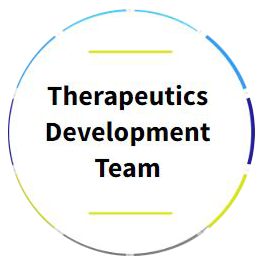Orphan Drug Designation for Rare Diseases

Orphan drug designation is a regulatory status granted to pharmaceuticals developed for the treatment of rare diseases. It provides incentives to encourage the research, development, and approval of therapies targeting small patient populations.
At the age of 21, Stephen Hawking, a brilliant physicist, was diagnosed with ALS (Amyotrophic Lateral Sclerosis). ALS is a rare neurodegenerative disease, affecting 4–6 out of 100,000 people. Despite the initial prognosis of just two years, Hawking’s life with ALS spanned five decades. His life story underscores the devastating impact of rare diseases on individuals and their families and the profound importance of advancing medical research and treatment options for these conditions. It highlights the dire need for orphan drug development — an endeavor that the introduction of orphan drug legislation has significantly bolstered.
Though individually uncommon, rare diseases collectively affect millions of people worldwide and present a unique set of challenges for both patients and the pharmaceutical industry. Historically, the development of treatments for these conditions has been limited, primarily due to the low-profit potential associated with small patient populations.
However, the past few decades have witnessed a significant paradigm shift, with the pharmaceutical landscape evolving to more inclusively address the needs of those suffering from rare diseases. The inception of orphan drug regulations in both the United States and the European Union has been pivotal in incentivizing the development of these crucial treatments. Rooted in the acknowledgment that traditional pharmaceutical business models inadequately cater to the needs of rare disease patients, legislation such as the Orphan Drug Act of 1983 in the U.S. and the Orphan Regulation of 2000 in the EU was introduced.
These regulations offer pharmaceutical companies a range of incentives, including tax credits, grants, and a period of market exclusivity, thereby encouraging the investment in and development of new therapies for rare diseases. To truly appreciate the impact of these regulations, one needs to consider the perspectives of patients such as Stephen Hawking and his family. It is crucial to remember the human element at the core of this discourse.
Understanding rare diseases
Defining rare diseases: Prevalence and impact
Rare diseases, often referred to as orphan diseases, are those that affect a small fraction of the population. Although the threshold for what constitutes a “rare” condition varies by region. In the United States, a disease is considered rare if it affects fewer than 200,000 people at any given time (that is, about 6 per 10,000 people). The EMA considers a disease an orphan if it affects fewer than 5 in 10,000 people.1
Despite their rarity, these diseases collectively present a significant health concern, impacting millions worldwide. There are estimated to be over 7,000 rare diseases affecting an estimated 300 million people globally. The diversity of these conditions, ranging from genetic disorders to rare cancers, poses unique challenges in diagnosis, research, and treatment.
The impact of rare diseases extends beyond the patients; it affects families, caregivers, and the healthcare system. Patients often face a long and arduous journey toward receiving a correct diagnosis, sometimes called the “diagnostic odyssey,”2 which can span several years and involve numerous misdiagnoses. This delay in diagnosis exacerbates patient suffering, hampers effective treatment, and significantly affects the quality of life of patients and their families.
Challenges in developing treatments for orphan drugs
Developing treatments for rare diseases is fraught with challenges, chief among them being the economic viability of investing in therapies for small patient populations. The limited market potential for such treatments discourages pharmaceutical companies from pursuing research and development in this area, leading to a significant unmet medical need within these communities.
-
- Scientific and technical challenges: Rare diseases often have complex pathologies, with many still poorly understood. The lack of basic scientific knowledge about the underlying mechanisms of many rare diseases makes drug discovery and development particularly challenging. Moreover, the small number of patients makes conducting traditional large-scale clinical trials difficult, complicating the assessment of treatment efficacy and safety.
- Regulatory hurdles: Although regulatory agencies like the FDA and EMA have put in place frameworks to facilitate orphan drug development, navigating these regulations remains a complex process. The unique aspects of rare disease treatment development, such as the need for specialized trial designs and the acceptance of alternative endpoints, require a nuanced understanding of regulatory expectations.
- Market and financial challenges: The high cost of drug development, coupled with the small patient populations for rare diseases, poses significant financial risks for pharmaceutical companies. Although orphan drug legislation offers incentives such as tax breaks and market exclusivity, the overall financial model for orphan drugs is still challenging. The high cost of these drugs upon reaching the market also raises issues of accessibility and affordability for patients.
- Collaboration and data sharing: The rarity of these conditions necessitates global collaboration and data sharing among researchers, healthcare professionals, and patient advocacy groups. Building consortia and networks to share data, resources, and expertise is crucial but often hampered by logistical, regulatory, and proprietary barriers.
- Scientific and technical challenges: Rare diseases often have complex pathologies, with many still poorly understood. The lack of basic scientific knowledge about the underlying mechanisms of many rare diseases makes drug discovery and development particularly challenging. Moreover, the small number of patients makes conducting traditional large-scale clinical trials difficult, complicating the assessment of treatment efficacy and safety.
Benefits of orphan drug designation
The orphan drug designation provides a suite of benefits to encourage pharmaceutical companies to invest in developing treatments for rare diseases. These incentives make the pursuit of orphan drugs more appealing financially and facilitate the drug development and approval process. Here’s a closer look at the key benefits:
Financial Incentives for pharmaceutical companies
-
- Tax credits: Companies developing orphan drugs can receive significant tax credits for the costs incurred in conducting clinical trials. This financial incentive helps reduce the overall expense of drug development, making projects that might otherwise be financially unviable more attractive.
- Grant funding: In some jurisdictions, companies may apply for grant funding to support the research and development of orphan drugs. These grants can cover various activities, from preclinical studies to clinical trial phases.
- Fee waivers: Regulatory agencies often waive specific fees associated with the drug approval process for orphan drugs. This includes application fees and product registration fees, which can be substantial.
- Tax credits: Companies developing orphan drugs can receive significant tax credits for the costs incurred in conducting clinical trials. This financial incentive helps reduce the overall expense of drug development, making projects that might otherwise be financially unviable more attractive.
Regulatory support and expedited assessments
-
- Advice meetings: Orphan drug designation often comes with the benefit of close interaction with the regulatory agencies for advice during the development. This guidance help optimize study designs and ensure that the development program meets the regulatory requirements for approval.
- Expedited regulatory paths: Drugs with orphan designation often constitute an unmet medical need and may be eligible for Fast-Track and Breakthrough Therapy Designation in the US or Priority medicine (PRIME) in EU leading to expedited assessment by the regulatory bodies. This can significantly shorten the time to market, providing patients with quicker access to new treatments.
- Approval process: Orphan drugs are often eligible for shorter review timeline by the agency, so called Priority Review in the US and Accelerated assessment in EU. In addition to this, orphan drugs are often approved based on promising early limited clinical data. This allows the drug to be marketed while further evidence is gathered to confirm its benefit so called Accelerated Approval in US and Conditional Approval in EU.
- Advice meetings: Orphan drug designation often comes with the benefit of close interaction with the regulatory agencies for advice during the development. This guidance help optimize study designs and ensure that the development program meets the regulatory requirements for approval.
Market exclusivity: What it means for orphan drug developers
-
- Exclusivity period: Upon approval, orphan drugs are granted a period of market exclusivity. This period varies by jurisdiction but is typically seven years in the United States3 and ten years in the European Union.4 During this time, competitors cannot market similar drugs for the same indication, providing a significant competitive advantage.
- Protection from competition: The exclusivity period provides a valuable window during which the drug developer is protected from competition, allowing them to recoup the investment in the drug’s development and potentially generate profit. This is particularly important for drugs targeting small patient populations, where the market size is inherently limited.
- Incentive for further development: The prospect of market exclusivity also incentivizes companies to invest in the development of treatments for conditions that might not otherwise attract commercial interest. It encourages innovation and investment in new therapies for rare diseases, ultimately benefiting patients with limited treatment options.
- Exclusivity period: Upon approval, orphan drugs are granted a period of market exclusivity. This period varies by jurisdiction but is typically seven years in the United States3 and ten years in the European Union.4 During this time, competitors cannot market similar drugs for the same indication, providing a significant competitive advantage.
The process of obtaining orphan drug designation
To qualify for orphan drug designation, a drug must meet specific criteria largely consistent across regulatory agencies, though variations exist from one jurisdiction to another. Firstly, the drug in question must target a rare condition, defined based on the population it affects (see earlier section on Understanding Rare Diseases). Beyond the condition’s rarity, the application for orphan drug designation must convincingly address an unmet medical need, either because no existing treatments are available or because the new drug promises to be safer or more effective than current options.
Additionally, the application must present a scientific rationale for the drug’s use, supported by evidence or a well-founded hypothesis that the drug will effectively treat, prevent, or diagnose the specified rare disease. This comprehensive approach ensures that only drugs that genuinely have the potential to impact rare diseases significantly are granted orphan drug designation.
Step-by-step guide to the application process
-
- Pre-application research and development: Before applying for orphan drug designation, companies conduct preliminary research to establish the drug’s safety and anticipated efficacy for the target condition. Preclinical data in relevant animal models are sufficient, while clinical data is not a must.
- Preparation of application: The next step involves preparing a detailed application that includes the drug’s description, the rationale for its use in rare conditions, prevalence data, and existing evidence regarding its efficacy and safety.
- Submission to regulatory agency: Once the application is complete, it is submitted to the relevant regulatory agency, such as the United States’ FDA or the European Union’s EMA.
- Review process: The regulatory agency reviews the application to ensure it meets all eligibility criteria. This review process may involve questions or requests for additional information from the applicant.
- Designation granted: If the application is successful, the regulatory agency grants orphan drug designation, allowing the company to access the associated benefits.
- Pre-application research and development: Before applying for orphan drug designation, companies conduct preliminary research to establish the drug’s safety and anticipated efficacy for the target condition. Preclinical data in relevant animal models are sufficient, while clinical data is not a must.
Pro-tip: Leverage scientific advice in orphan drug development
In addition to orphan drug designation, pharmaceutical companies developing orphan drugs should seek advice from the regulatory agencies to strengthen their applications. This collaborative process involves obtaining guidance on the development and regulatory aspects of the drug, ensuring that the proposed studies are adequately designed to meet the regulatory standards for approval. Advice meetings can cover a wide range of topics, from the design of clinical trials, including endpoints and statistical considerations, to the quality of nonclinical studies and manufacturing processes.
Engaging with regulatory agencies for advice early in the drug development process can significantly enhance the likelihood of success, as it allows companies to align their development strategies with regulatory expectations. This proactive approach not only streamlines the development process but also reduces the risk of costly setbacks, thereby facilitating the timely introduction of new treatments for rare diseases into the market.
Challenges and controversies in orphan drug development
While the development and distribution of orphan drugs offer significant benefits to patients with rare diseases, they are not without challenges and controversies.
Pricing and accessibility of orphan drugs
Due to high research and development costs and small patient populations, orphan drugs are notably expensive. This limits access for patients without substantial healthcare support and pressures healthcare budgets. This has sparked debate on balancing affordability and incentives for pharmaceutical companies to develop treatments for rare diseases.
Ethical considerations in orphan drug development
Developing treatments for rare diseases introduces ethical dilemmas, especially in resource allocation and drug pricing. High costs can limit access to crucial treatments, raising questions about society’s investment priorities.5 Additionally, the push for quick approvals might risk patient safety, further complicating ethical considerations.
Balancing profit and patient access
The profitability motive of pharmaceutical companies, driven by incentives like tax breaks and exclusivity, sometimes conflicts with the need for affordable patient access to treatments. Criticism arises when companies leverage these benefits for broader profit, challenging the balance between rewarding innovation and ensuring treatment accessibility.6
Orphan drug designation for rare pediatric diseases
The FDA’s strategy to increase the availability of drugs in children include the Pediatric Research Equity Act (PREA)7 and the Best Pharmaceuticals for Children Act (BPCA),8 mandating pediatric study plans and offering additional market exclusivity for conducting pediatric studies, respectively. Similarly, the EMA’s Pediatric Regulation mandates the inclusion of a Pediatric Investigation Plan (PIP) in new drug applications.
Rare pediatric diseases present a particular challenge in drug development due to small patient populations and limited commercial appeal, prompting regulatory frameworks aimed at incentivizing treatment advancements. The FDA has introduced the Rare Pediatric Disease Priority Review Voucher Program, providing a unique incentive to expedite drug review processes. Despite these efforts, challenges such as the need for innovative trial designs and regulatory flexibility remain. Ongoing collaboration between regulatory agencies, pharmaceutical companies, and patient groups is essential to overcome these hurdles and improve access to treatments for children with rare diseases.
Final takeaways: Navigating the future of orphan drug designation
The journey toward advancing treatments for rare diseases through orphan drug designation has been transformative, offering new hope to patients facing conditions once deemed untreatable. This progress is underpinned by critical regulatory frameworks like the Orphan Drug Act in the U.S. and the Orphan Regulation in the EU. These regulations have been instrumental in encouraging pharmaceutical research and development by offering significant incentives like tax credits, grant funding, and market exclusivity. However, the journey has its challenges. The high cost of orphan drugs and their accessibility remain contentious issues, raising ethical questions about pricing strategies and the balance between profit and patient access.
A crucial aspect of navigating these challenges is leveraging scientific advice from regulatory bodies, which can significantly enhance the likelihood of success for orphan drugs. This collaborative process allows companies to align their development strategies with regulatory expectations, optimizing study designs and ensuring the development program meets the necessary approval criteria.
Furthermore, the focus on pediatric rare diseases adds another layer of complexity and urgency to the development process. Regulatory incentives designed to encourage research into pediatric conditions, such as the FDA’s Rare Pediatric Disease Priority Review Voucher Program, highlight the critical need for treatments that cater to the youngest and often most vulnerable patients.
About the Therapeutics Development Team
Cytel’s Therapeutics Development Team is comprised of specialized, multidisciplinary thought leaders dedicated to advancing the science of trial design. With our deep scientific expertise, unparalleled technology, and pioneering methodologies, you can make clinical trial decisions with confidence.
|
Have questions? Get in touch with our experts: Erika Spens, Director Regulatory, Affairs; Sofie Broberg, Senior Consultant, Regulatory Affairs; Anna Törner, VP, Strategic Regulatory Affairs; and Linda Nord, Senior Consultant Regulatory Affairs: |
Notes
1 European Medicines Agency. (2018). Development of medicines for rare diseases.
2 National Institutes of Health. (2024). Multidisciplinary Machine-Assisted, Genomic Analysis and Clinical Approaches to Shortening the Rare Diseases Diagnostic Odyssey.
3 U.S. FDA. (2022). Designating an Orphan Product: Drugs and Biological Products.
4 European Medicines Agency. Market exclusivity: Orphan medicines.
5 Berdud, M., Drummond, M., and Towse, A. Establishing a reasonable price for an orphan drug.
6 Simoens, S. (2011). Pricing and reimbursement of orphan drugs: The need for more transparency.
7 U.S. FDA. Pediatric Research Equity Act (PREA).
8 U.S. FDA. Best Pharmaceuticals for Children Act (BPCA).
Read more from Cytel’s Perspectives:
Sorry no results please clear the filters and try again

Strategies to Overcome Limited Patient Population Challenges in Rare Disease Studies

Bayesian Strategies in Rare Diseases

Sample Size Re-Estimation for Rare Disease Clinical Trials



